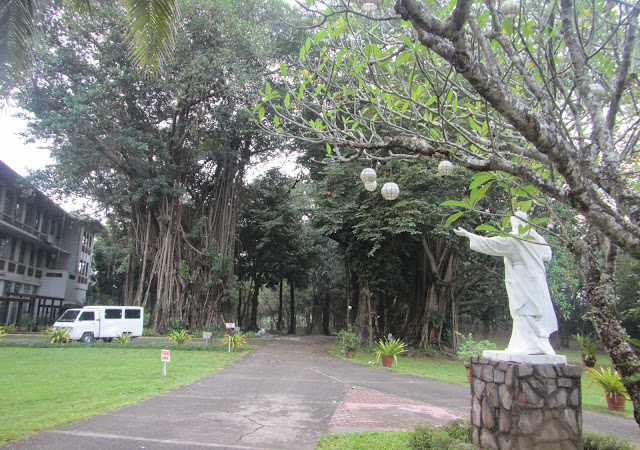| Location: 1117 Quirino Highway, Novaliches, Quezon City, Philippines Telephone Numbers: (02) 939-5060/69 Mobile Phone Number: (+63) 917-8688187 E-mail Address: shretreat@yahoo.com Website: www.shretreat.com Descriptive Summary: Sacred Heart Novitiate Retreat House and Seminar Center is owned and managed by the Jesuits which has been operating for 75 years already and considered to be their spiritual home and countless others opted to be in warm embrace of God’s divine presence. It has four air-conditioned rooms which can accommodate 30 to 150 people. It also has seven private rooms for individual consultations and spiritual direction. It was the Jesuit missionaries Fr. Sedeño, Fr. Sanchez along with Bro. Gallardo who inspired the creation of this spiritual home wayback in 1581. |
View Sacred Heart Novitiate in a larger map |
|---|

Indeed, Sacred Heart Retreat House is a place where one can have total silence and commune with his Divine Creator. The serenity of the place can give one a total retreat from the hustle-bustle cosmopolitan lifestyle. Yet, this place is still a part of Metropolitan Manila.

As you start your very first step while entering this tranquil place, you will feel the aura of tranquility which puts you into the state of reciprocity.

Mother nature abounds inside the compound and fresh air is every where. The administration building and other facilities are approximately more than kilometer from the main gate.

It has several amenities such as function rooms, consultation areas and air-conditioned conference rooms for seminars, conferences and meetings.

The house assists in facilitating reservations and contacting spiritual directors for retreat needs where there are various retreat directors, such as Jesuits, lay persons, and other religious who are available for individual and group retreats.

The house also accommodates corporate team building activities. Though every year from the last Monday of October to the third week of November, the whole house is reserved for those making the thirty-day retreat, the full Spiritual Exercises of Saint Ignatius of Loyola.

There are varied sports facilities available like basketball and volleyball courts, a soccer field, a tennis wall and court and a swimming pool. It also has 24-hour security services.

The house is equipped with six chapels and one of them is the Immaculate Concepcion Chapel. Other smaller chapels are: De la Strada, Francis Xavier, Holy Family and Saint Joseph. These chapels can accommodate smaller groups of retreatants.

The chapel above considered as the Main Chapel is housed in the other building just next to the Refectory or Mess Hall as well as the kitchen facilities. It is a chapel where I really felt the presence of God when our spiritual master facilitated the spiritual cleansing session in the name of Brother Nikki “Nix” Hipolito – a graduate of Ateneo de Manila University.

Refectory can accommodate big groups as many as 150 in one serving where retreatants and guests are served with snacks and refreshments and three meals in a day.

The huge acacia tree on the background where roots occupy a wide radius of space is a dominant sight as you park your vehicle fronting the administration office.

Groups of retreatants and visitors would normally have their group picture taken from this statue of the Sacred Heart where the house has taken its name.

I personally thank, Ma’am Letty V. Uy, the president and major stockholder of Angels Institute of Learning and Angeli Dei Schools for inviting me to join in this very meaningful retreat held in this sacred venue. She was my former superior and remained to be a highly respected friend and mentor.
HOW TO GET THERE
Refer to this link Direction to the Sacred Heart Novitiate to get the right direction.





































